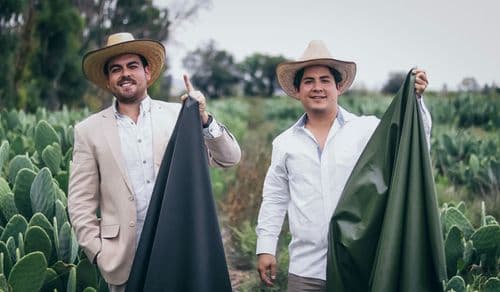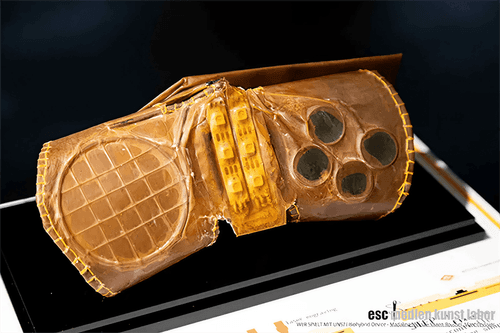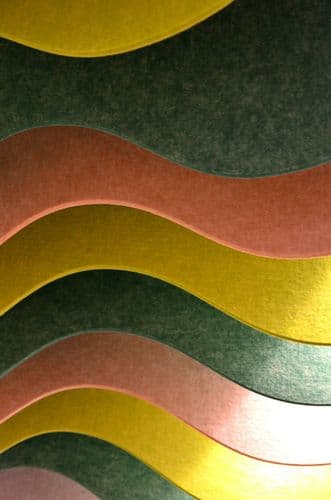1. The Tronco Coffee Table draws inspiration from tree stumps. Can you explain how this natural form was translated into your design process, and how the material choice reflects this inspiration?
The idea originated from observing tree stumps. I noticed those classic tables made by simply cutting tree trunks and applying varnish—very raw and literal. I began collecting images of tree stumps from various locations: the city where I live, the countryside, and places I visited. I aimed to translate that shape into a different material, and ropes seemed like a suitable option due to their malleability. I specifically sought out ropes made from recycled polymers and found many in different colors and thicknesses, which I then tested in my studio.
To integrate the tree stumps into my design process, I imported the collected images into 3D software and created solids based on the actual outlines of the tree shapes. This allowed me to reproduce the exact tree shape in plywood. After several tests, I developed a methodology to sew the ropes onto the structure, resulting in the final coffee tables.
For me, nature serves as a school for us human beings. As a designer, I firmly believe that we can always learn from it—its shapes, solutions, materials, textures, and more.
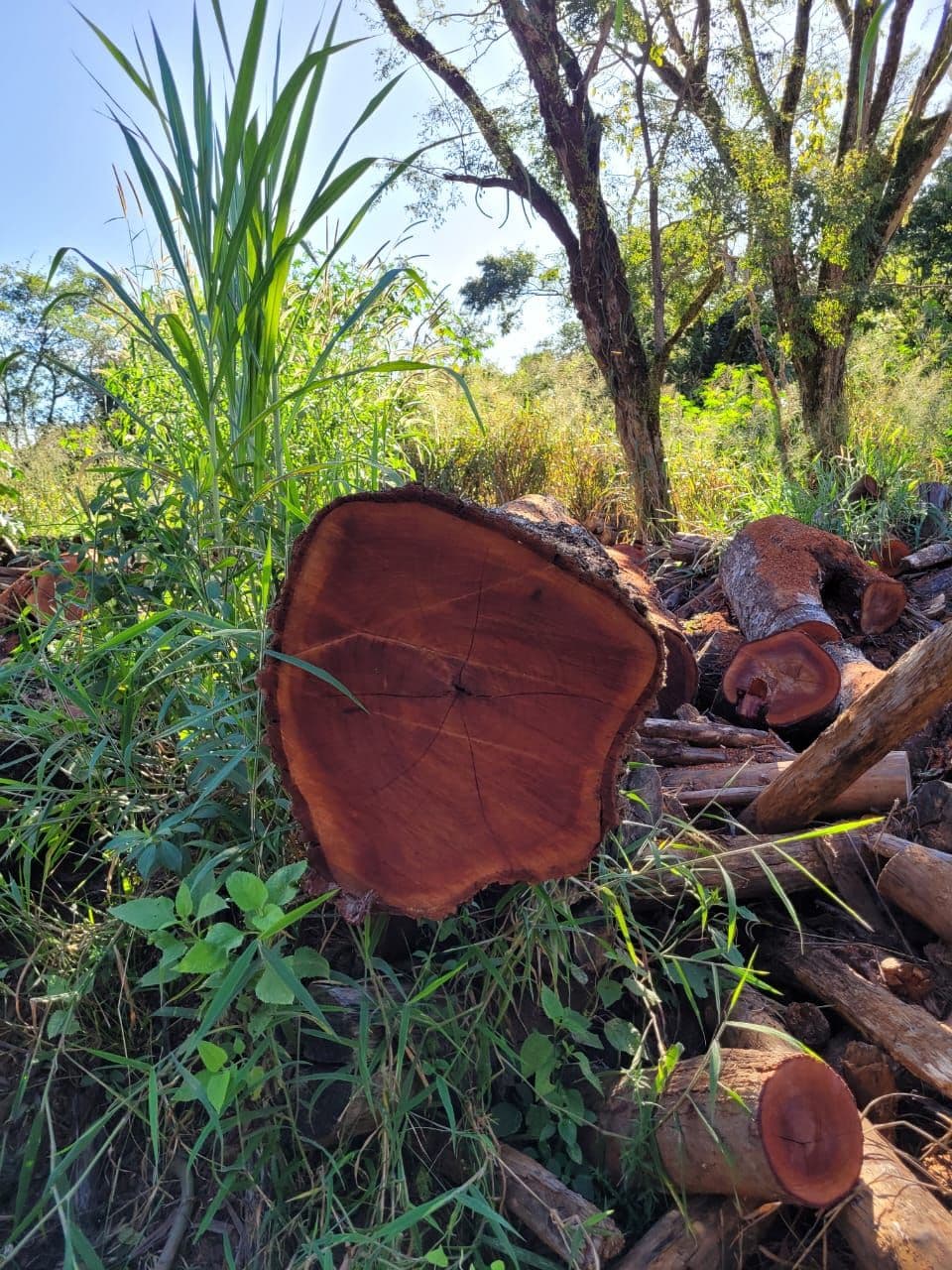
2. Recycled polymer ropes are a central material in your design. How do you assess the quality and durability of recycled materials when using them in high-end furniture design?
In these pieces, the ropes don't provide structural strength; they function more like a textile or fabric. Therefore, using recycled ropes is a logical choice—they have the same appearance as new ropes, and I primarily need them to be colorful and flexible. The high-end finish is achieved through meticulous hand sewing, which is crucial for the final aesthetic and a key element of this process.
The recycled polymer ropes used are not recommended for applications involving physical stress, but in this context, they work perfectly because they don't need to twist or bear any load. They perform just like new polymer ropes, offering the same durability and flexibility.
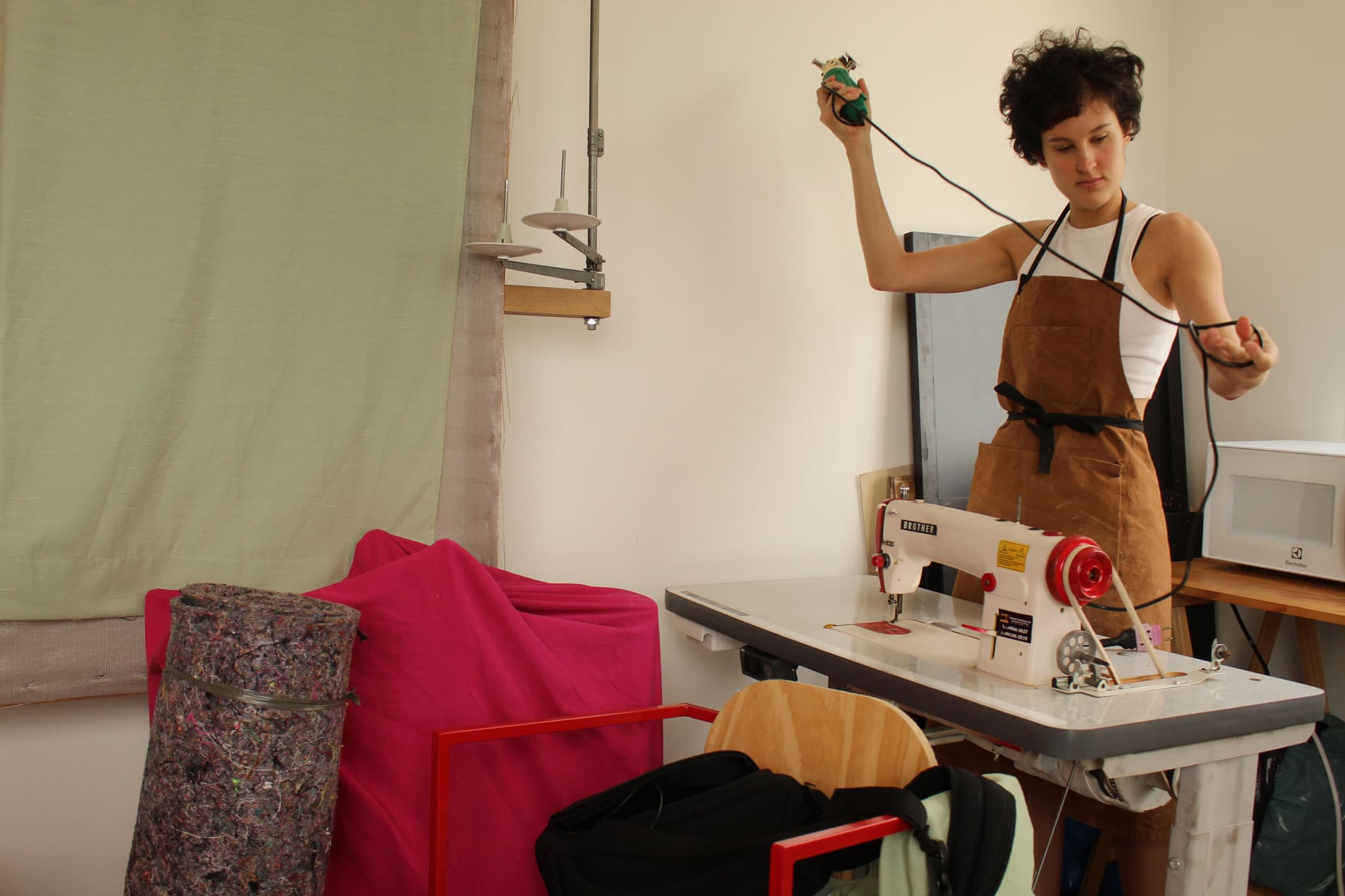
3. What challenges did you face when working with recycled polymer ropes to mimic the intricate patterns of tree rings, and how did you overcome them to achieve a high level of detail in the finished product?
The intention was never to mimic tree rings, but rather their shape. Upon completion, I realized that the product unexpectedly referenced the patterns of tree rings. By not focusing on replicating them, the process naturally led to a shape that resonates with the essence of tree rings, which turned out to be quite poetic.
4. The use of recycled materials in design is an important part of sustainability. How do you ensure that the environmental impact of these materials is minimized throughout the production process?
As I'm not operating on an industrial scale, I can minimize environmental impact by collaborating with artisans who practice slow production methods in my studio. This approach allows for more careful use of resources and helps reduce waste. I utilize recycled materials, and all leftover materials are retained in my studio for new creations. For instance, you can see this in my new collection, the Lava Vases, which were made from the leftover materials of the Tronco collection.

5. Could you walk us through the technical considerations when selecting recycled polymer ropes for this project? How do these materials perform in terms of longevity and functionality in everyday use?
The ropes act as upholstery, so the main technical considerations are ensuring they are soft enough for a needle to pass through and impermeable enough to withstand spills that may occur during everyday use. They can be cleaned with a vacuum cleaner or a soft, damp cloth with neutral soap if needed in specific areas. These are the same concerns I would have if I were using a non-recycled material.
6. With sustainability being a key theme, how do you envision the role of recycled materials in future furniture design, especially in terms of aesthetic appeal and structural integrity?
I believe recycled materials are essentially just materials. More than ever, we now have a wider variety of recycled materials that can substitute non-recycled ones. Thanks to technology and industries that are recycling materials, we have the opportunity to integrate these into our creations. As I mentioned before, it's not about the recycled material itself, but the 'how'—how you work with it, how you integrate it into a project, and how it's presented in the final piece.
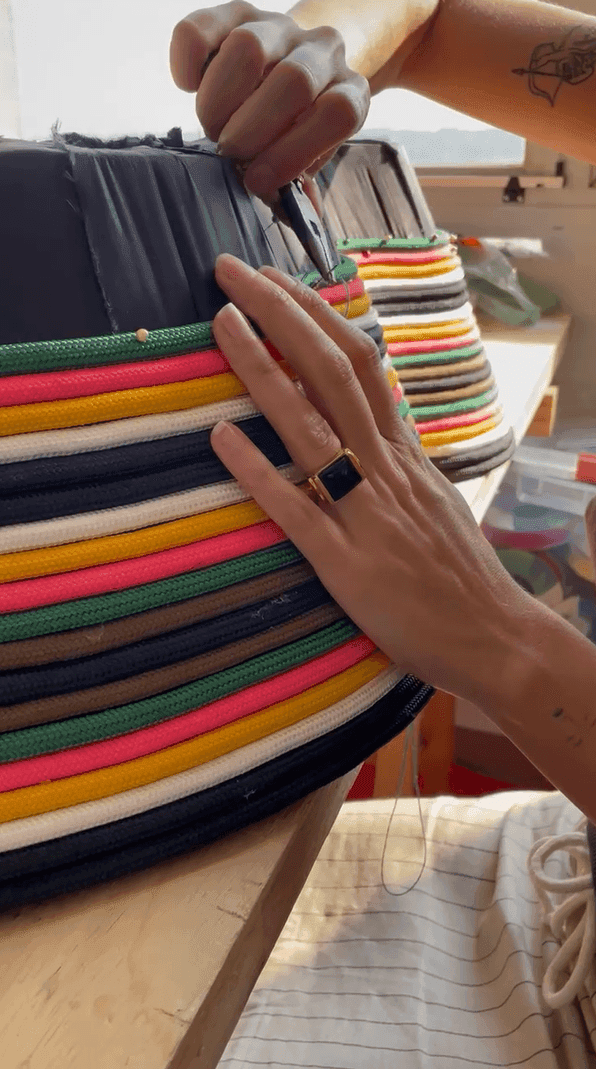
7. The hand-sewing technique used in the creation of the table’s form is quite unique. How did this manual approach enhance the final product, and what technical challenges did it present during the crafting process?
The craft process is, without a doubt, the most important part because it's the meticulous hand sewing that allows us to achieve the aesthetic result. This piece wouldn't exist without human hands. The entire process was challenging because I had to develop something that didn't exist before. The first challenge was to create a method for sewing these ropes together without showing the stitches while ensuring it was strong and durable. I had to determine how the structure needed to be for the ropes to be sewn onto it. This consequently shaped the final piece. After many tests, we achieved the final structure and finishing. Once we figured out the method, we refined it, like perfecting a recipe. Now, with the skills we've developed, me and five artisans know how to produce this piece with the best finishing possible.
8. Could you explain the specific process behind creating the layered tree ring pattern using the polymer ropes? How does this technique differ from traditional methods of working with similar materials?
Although the idea is not to mimic the tree rings, but rather to create an upholstered surface, the process of creating the layered pattern involves a specific hand-sewing technique, which could perhaps be related to the meticulous work seen in haute couture. First, the structure is wrapped in two layers of fabric, which serves as the base upholstery. Then, the polymer ropes are sewn over the fabric. This technique requires careful attention to detail, as the ropes need to be placed with precision to achieve the desired effect. A key element in this process is the deep study of the color palette, which adds to the uniqueness of each piece.
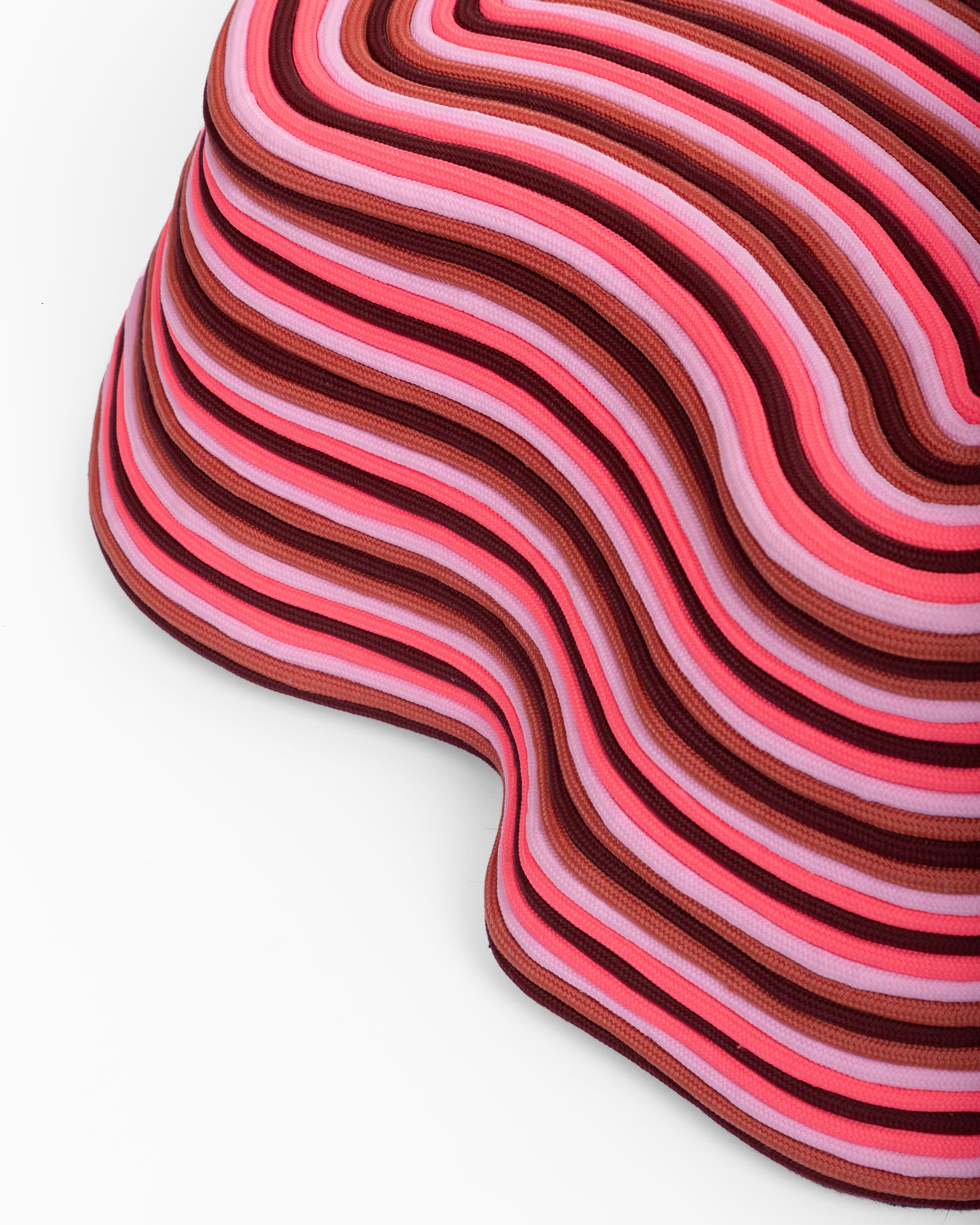
9. As a designer focused on sustainability, how do you see the future of materials like recycled polymers in the furniture industry? Do you think we will see more widespread adoption in high-end designs?
I have faith that the industry will increasingly incorporate sustainable practices and materials into its production chain. I want to believe that, at some point, sustainable industries will become the majority rather than the minority.
Speaking specifically about polymers, they're relatively easy to recycle, especially thermoplastics, and I see many industries already doing that. Today, we can find a much wider variety of recycled polymer materials on the market than we could just a few years ago. I truly believe we don't need to create everything from scratch anymore; we can always recycle.
In my work, the recycled ropes I use are made from thermoplastic polymers. Although they're not intended for structural use, they work perfectly for upholstery, as they don't need to hold weight or tension; they perform just like new ones.
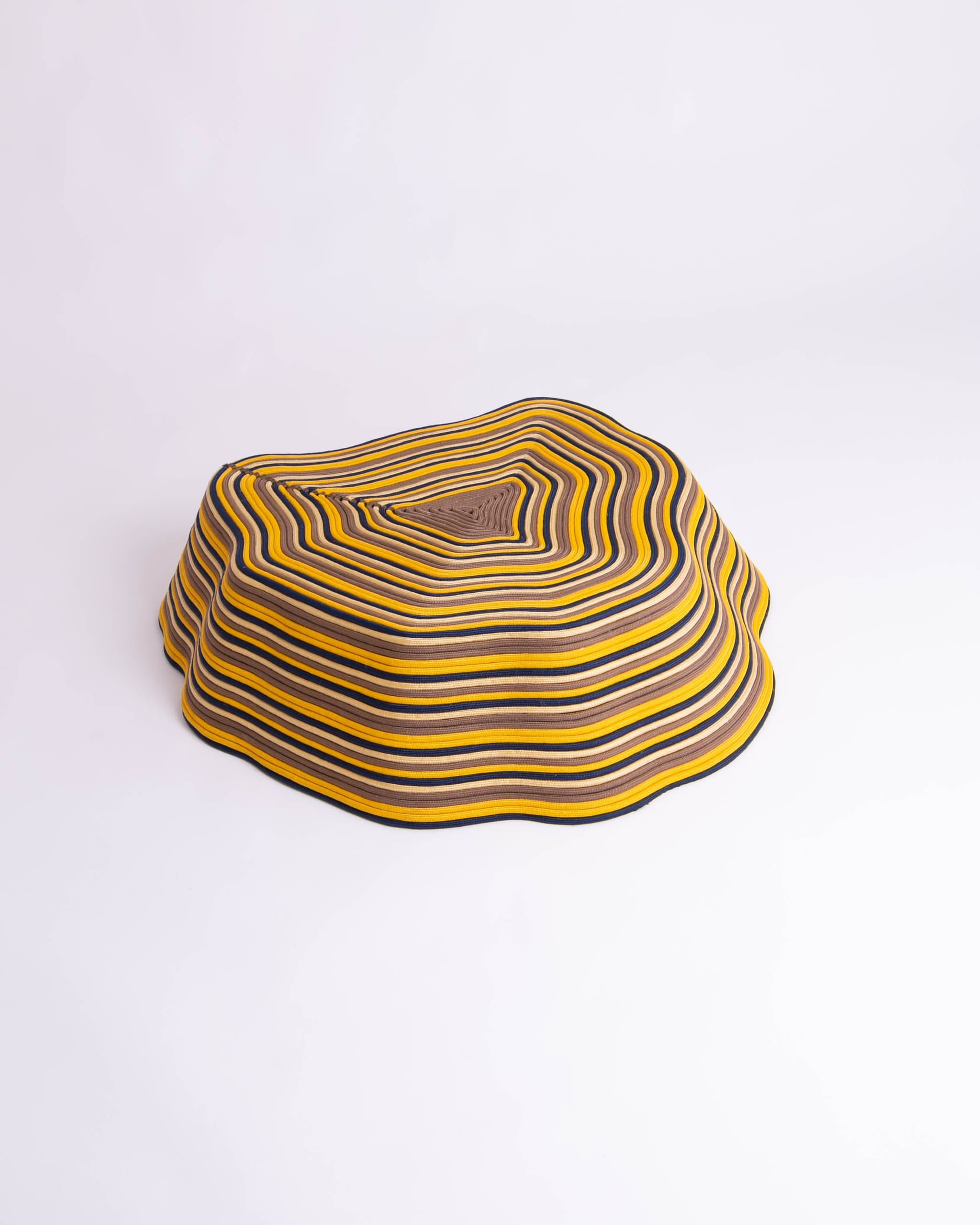
10. What impact do you hope the Tronco Coffee Table will have on consumers' understanding of sustainable design and the potential of repurposed materials in creating functional art pieces?
I hope that when people see a high-end, handcrafted design piece, they realize that this is valuable too—that you don't need to buy from big industries to achieve great finishing. There's a special connection in something that only exists because it was made by human hands. I believe recycled materials, slow production, and handcrafted design are a recipe for good design and for surprising, unexpected aesthetics.


